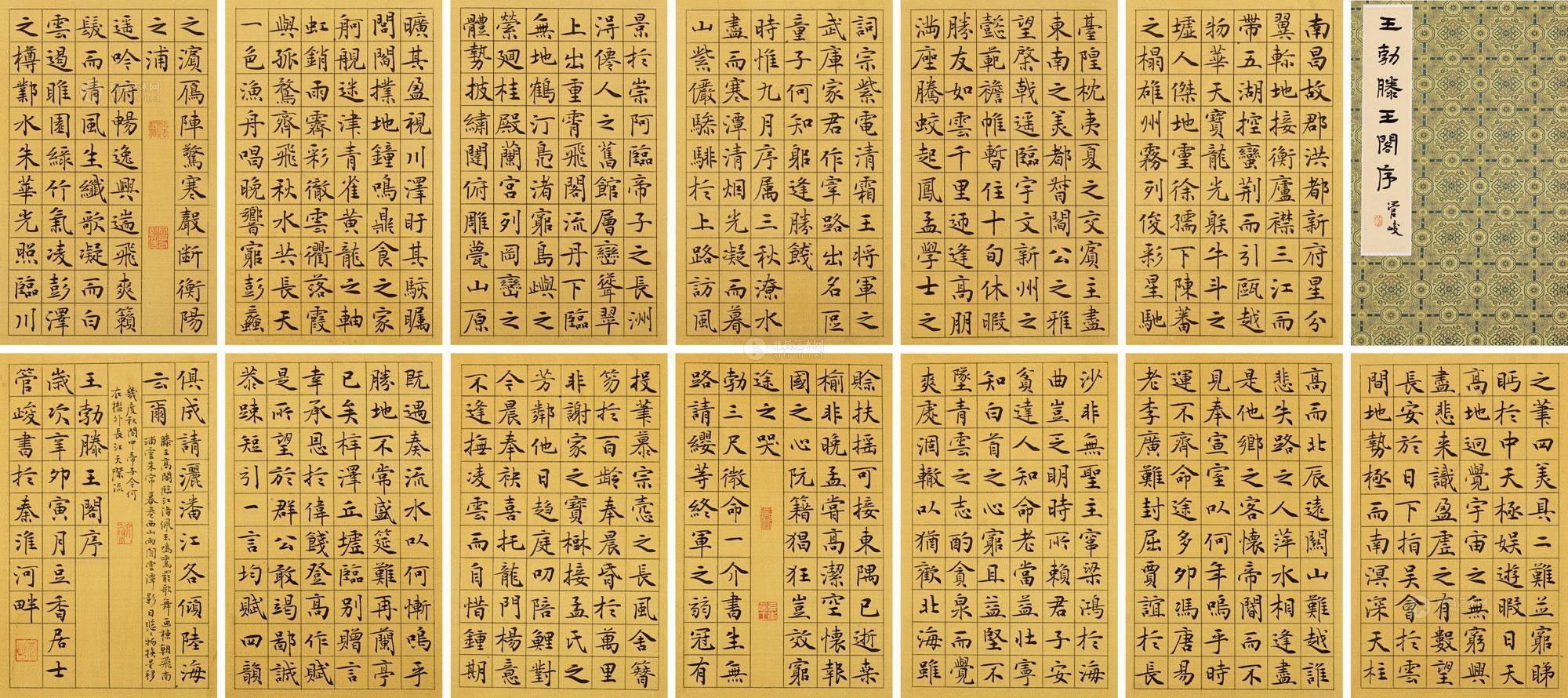

滕王阁,江南三大名楼之一。位于中国江西省南昌市赣江畔。屡毁屡建,今日之滕王阁为1989年重建。
Der Tengwangge-Pavillon befindet sich im Norden der Stadt, am Zusammenfluss vom Ganjiang und Fuhe. Der Bau des Pavillons wurde während der Tang-Dynastie im Jahre 653 von Prinz Li Yuanying in Auftrag gegeben. Über viele Jahrhunderte hinweg galt das Gebäude als der Höhepunkt der Pavillon-Architektur in China. Vom 9-stöckigen, mehr als 57 Meter hohen Pavillon hat man eine perfekte Aussicht auf die Stadt Nanchang und die beiden Ströme Ganjiang und Fuhe. In den vergangenen fast anderthalb Jahrtausenden wurde das Gebäude mehr als 20 Mal in Folge durch Kriege oder Unwetter zerstört und ist immer wieder neu errichtet und ausgebaut worden. Die letzte Renovierung war vor 13 Jahren. Vor Jahrhunderten war der Pavillon ein häufiger Treffpunkt für Fürsten, Mandarine und auch Literaten. Besonders in der Abenddämmerung im Herbst bietet sich den Besuchern des Pavillons ein idyllisches Bild. Ein Dichter aus der Tang-Dynastie namens Wang Bo schilderte einmal die Szenerie, die ihn bezauberte: "In der Herbstabenddämmerung wirft man einen Blick aus der Höhe des Gebäudes hinaus in die Ferne, und es lässt sich kaum erahnen, wo der Horizont den Fluss vom Himmel scheidet. Erst die Wildenten, die dort in der Ferne himmelwärts ziehen, lösen das Bild auf".
Diese poetische Beschreibung von Wang Bo wurde berühmt und hat auch den Tengwangge-Pavillon bekannt gemacht. Der Pavillon zieht seither alle an, die auf den Spuren des Dichters jene Szenerie nachempfinden wollen, die ihn so tief beeindruckt hatte.(Quelle: www.chinareisedienst.de)
唐代の653年(永徽四年)、当時この地に封じられた李元嬰(唐の建国者・李淵の第22子)の道楽によって建てられた。彼は最初は滕県(現在の山東省滕州市)に封じられていたため滕王と呼ばれており、ここから滕王閣と呼ばれる。幾度も戦乱などにより破壊された。清の同治年間に28回目の再建が行われたが1929年に軍閥同士の戦争で破壊され再建されていなかった。現在のものは1989年に再建されたもので29回目の再建に当たる。
贛江のほとりに建てられており、楼閣から街を見下ろすことができる。
The Pavilion of Prince Teng (Chinese: 滕王阁; pinyin: Téngwáng gé) is a building in the north west of the city of Nanchang, in Jiangxi province, China, on the east bank of the Gan River and is one of the Three Great Towers of southern China. The other two are the Yueyang Tower and the Yellow Crane Pavilion. It has been destroyed and rebuilt many times over its history. The present building was rebuilt in 1989 on the original site. The rebuilding plan was devised by the architect Liang Sicheng, and now the Pavilion of Prince Teng is the landmark of Nanchang. There are nine floors in total. The main architectural structure is in Song dynasty wooden style, showing the magnificence of the Pavilion.
The Pavilion of Prince Teng was first built in 653 AD, by Li Yuanying, the younger brother of Emperor Taizong of Tang and uncle of Emperor Gaozong of Tang. Li Yuanying was enfeoffed as Prince Teng in 639 and spent his early years in Suzhou. In 652 he was assigned the governorship of Nanchang where the pavilion served as his townhouse. The Pavilion of Prince Teng is the only existing royal architecture in southern China. Twenty years later, the building was rebuilt by the new governor. Upon its completion, a group of local intelligentsia gathered to compose prose and poetry about the building. The most famous of these is the Preface to the Pavilion of Prince Teng by Wang Bo. This piece made the Pavilion of Prince Teng a household name in China down to the present day.
The Pavilion was to be destroyed and rebuilt a total of 29 times over the next centuries.[1] The building itself changed shape and function many times. The penultimate construction was during the Tongzhi era of the Qing Dynasty. That building was destroyed in October 1926 during the chaotic warlords era.[2]
Le Pavillon du Prince Teng (chinois simplifié : 滕王阁 ; chinois traditionnel : 滕王閣 ; pinyin : ) se situe sur la rive est de la rivière Gan dans la ville de Nanchang dans la province de Jiangxi en Chine. L'édifice a été au fil du temps plusieurs fois détruit par des incendies puis reconstruit.
Le pavillon est bâti en 653 par Li Yuanying, frère cadet de l'empereur Tang Taizong. Li Yuanjing est intronisé Prince Teng en 639 et passe son enfance à Suzhou. Une vingtaine d'années après l'achèvement de la construction, le poète Wang Bo écrit un célèbre poème intitulé Préface au pavillon du Prince Teng.







 History
History




